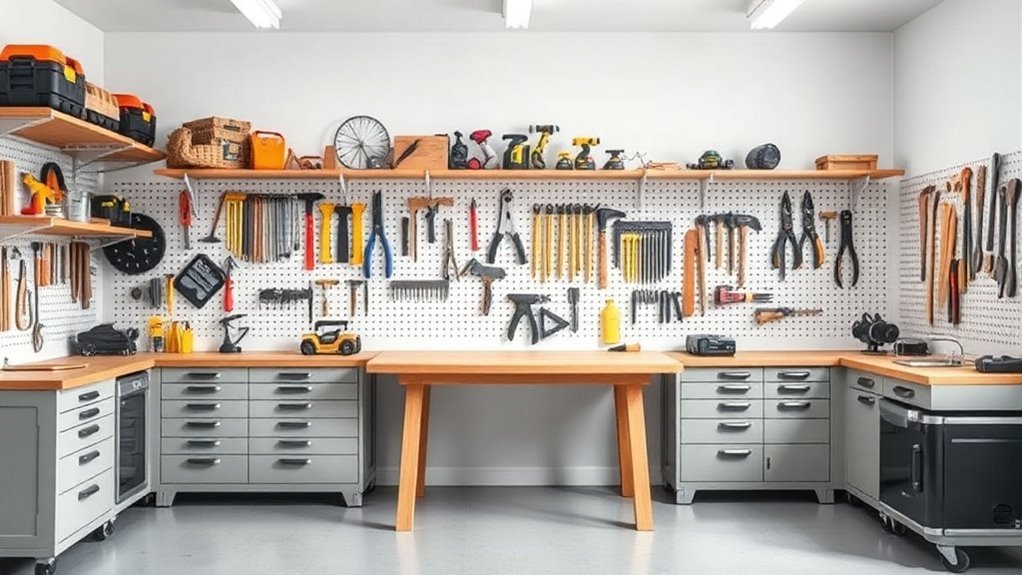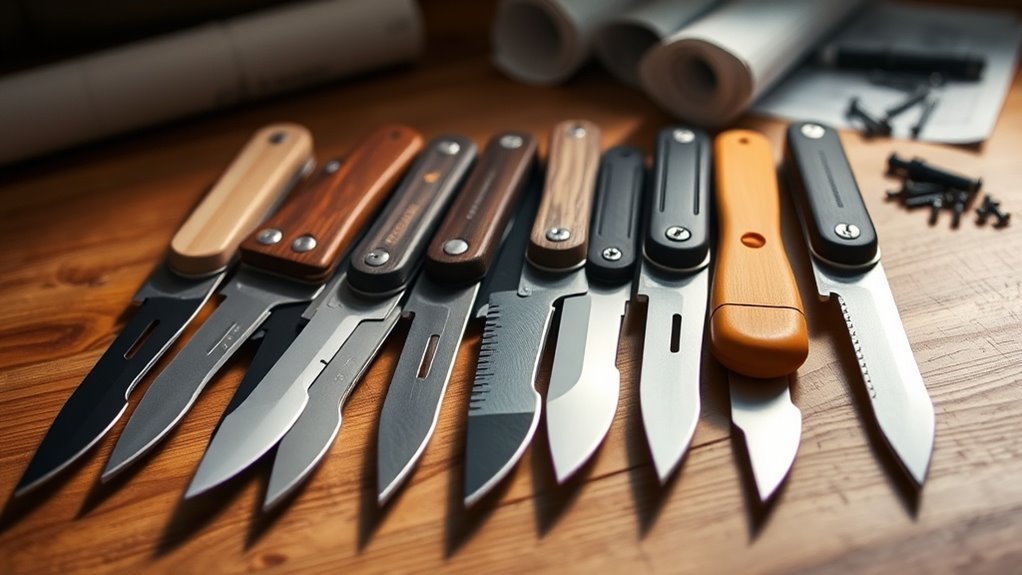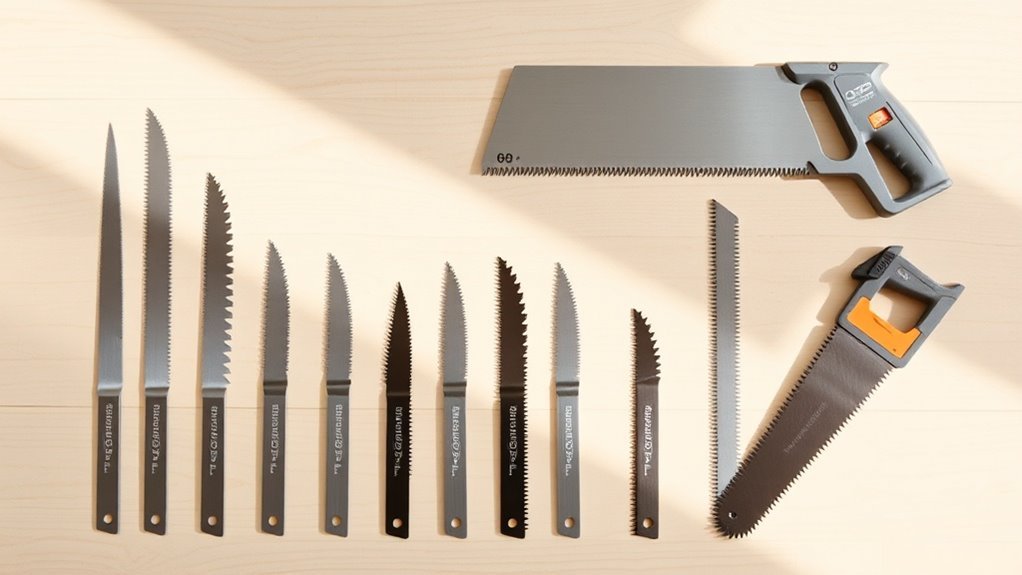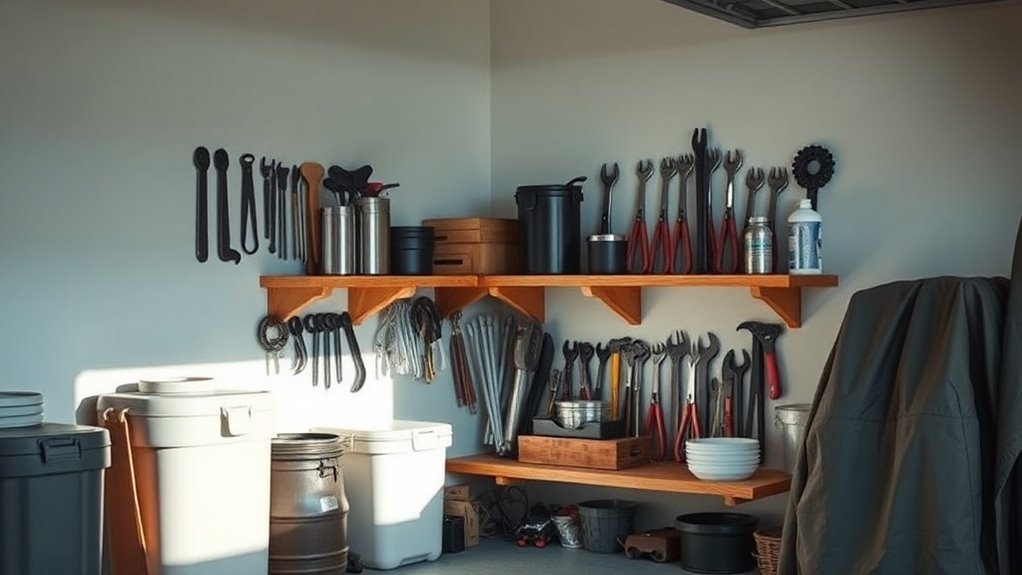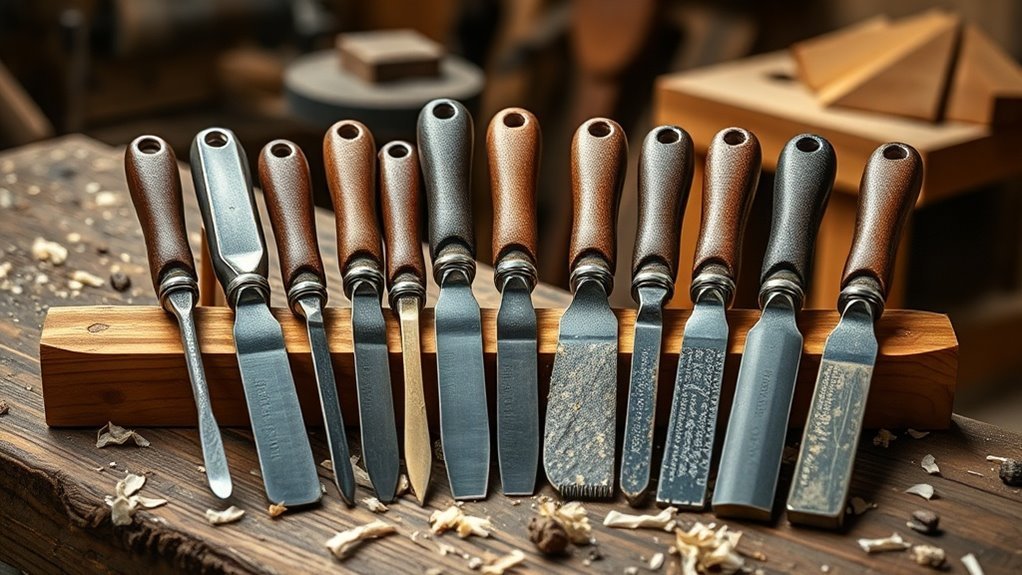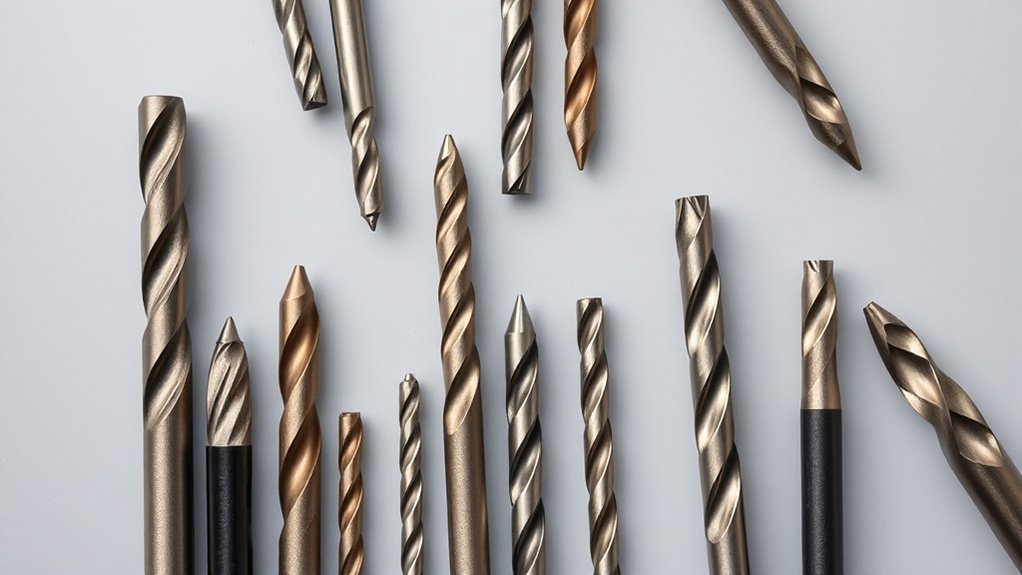The Role of Measuring Tools in Handwork Accuracy

Measuring tools are essential for achieving accuracy in your handwork. Whether you’re sewing, woodworking, or painting, proper measurements guarantee your project meets your vision. Familiarizing yourself with different tools, like tape measures and digital calipers, can make a big difference. Remember to maintain and store your instruments correctly to keep them reliable. Avoid common measuring mistakes to prevent frustrating errors. You’ll discover even more valuable tips and techniques to perfect your craft as you continue exploring!
Key Takeaways
- Accurate measurements are vital for achieving the desired quality and success in handwork projects, minimizing errors and waste.
- Proper use of measuring tools, like tape measures and rulers, ensures precise execution of designs in crafts and woodworking.
- Familiarity with each tool’s scale and technique reduces measurement mistakes and enhances overall craftsmanship in handwork.
- Consistent maintenance and proper storage of measuring instruments maintain their reliability, crucial for regular use in creative tasks.
- Avoiding common measurement mistakes, such as misreading scales or using unsuitable tools, significantly improves handwork accuracy and effectiveness.
Understanding Different Types of Measuring Tools
When it comes to handwork accuracy, having the right measuring tools can make all the difference. Understanding the various types of measuring tools available is vital for successful projects.
For instance, a tape measure is versatile and perfect for larger items, while a ruler offers precision for smaller tasks. A seam gauge is essential for sewing projects, helping you guarantee consistent seam allowances.
If you’re working with intricate designs, a digital caliper can provide precise measurements down to the millimeter. Additionally, a level tool will help you achieve straight lines and make sure your projects align correctly. Using the right tools can significantly reduce costly mistakes that typically arise from improper measurements, ensuring a smoother renovation process.
The Importance of Accurate Measurements in Various Crafts
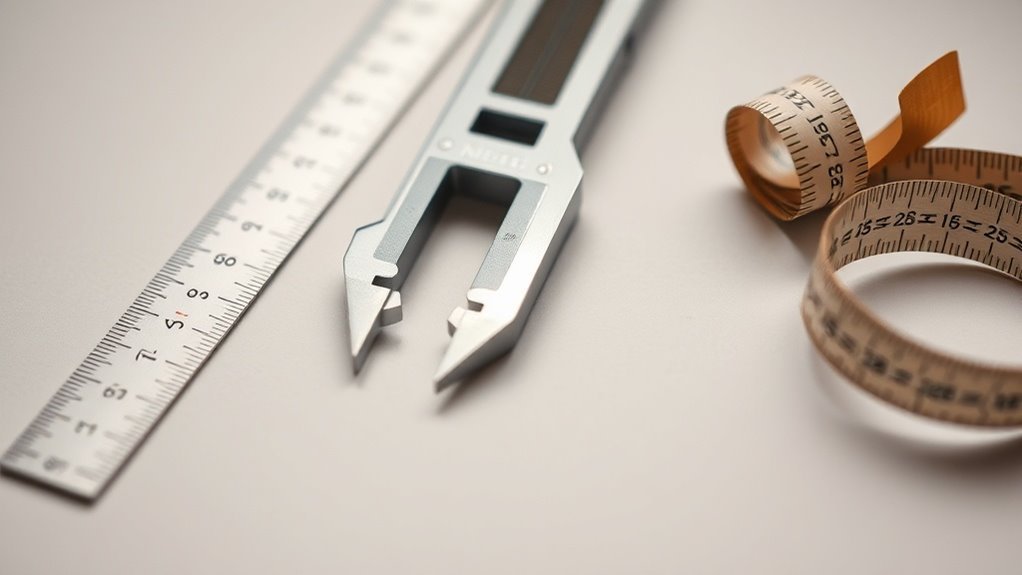
Accurate measurements are essential in crafts, as they directly impact the quality and success of your projects. Whether you’re sewing, woodworking, or creating jewelry, precision in your measurements can make all the difference.
If you cut fabric without measuring properly, you might end up with pieces that don’t fit together, leading to frustration and wasted materials. In woodworking, small errors can turn a beautiful design into a disaster.
Even in simpler crafts, like knitting or painting, incorrect measurements can affect proportions, resulting in an unbalanced final piece. By taking the time to measure accurately, you not only enhance the craftsmanship but also guarantee that your creative vision comes to life just as you imagined it. Moreover, precise measurements can significantly improve the quality of the final product, ensuring that your project meets your expectations.
How to Use Measuring Tools Effectively
Although measuring tools vary widely from tape measures to rulers, understanding how to use them effectively can enhance your crafting experience. Start by familiarizing yourself with each tool’s scale—make sure you’re comfortable reading both metric and imperial measurements.
When measuring, always hold the tool straight and avoid angles that can distort your readings. For tape measures, pull the tape taut, ensuring no slack to avoid inaccurate lengths. If you’re using a ruler, align it precisely with the edge of your material for accuracy.
Don’t forget to double-check your measurements; it’s easy to make mistakes in the excitement of creating. Finally, take your time—accuracy is key, and crafting is meant to be enjoyable! Additionally, proper use of measuring tools can significantly enhance the quality and safety of your projects.
Tips for Maintaining and Storing Measuring Instruments
Keeping your measuring tools in good condition is essential for maintaining accuracy in your handwork.
First, always clean your instruments after each use. Dust and residue can affect measurements, so a soft, dry cloth will do the trick.
Store your tools in a dedicated, dry space to avoid moisture damage and rusting. Use protective cases or pouches to prevent accidental drops or scratches.
If your tools are adjustable, check them occasionally for proper calibration.
Finally, keep a checklist of maintenance tasks, like replacing batteries in digital tools or recalibrating levels. Additionally, being mindful of environmental factors such as temperature and humidity can further enhance the precision of your measurements.
Taking these simple steps will extend the life of your measuring instruments, ensuring they remain reliable and accurate for every project.
Common Measuring Mistakes to Avoid in Handwork
Even with well-maintained measuring tools, mistakes can still creep into your handwork. One common error is misreading the measurement scale; always double-check the markings. Not securing your measuring tool properly can lead to inaccuracies, too. Also, failing to account for tool thickness often skews your results. Finally, using a measuring tool that’s not suited for the task can produce unreliable outcomes. Laser distance measuring tools, for example, utilize laser beams to determine distances with high precision, making them ideal for many handwork applications.
Here’s a quick reference table to help you:
| Mistake | Impact on Accuracy | Tip to Avoid |
|---|---|---|
| Misreading scale | Significant error | Double-check readings |
| Not securing the tool | Measurement shift | Use clamps or weights |
| Ignoring tool thickness | Inaccurate results | Measure twice, cut once |
| Wrong tool for the task | Major inaccuracies | Choose appropriate tools |
Questions
What Are the Best Measuring Tools for Beginners in Crafting?
For beginners in crafting, a measuring tape, ruler, and scale are your best bets. They’re versatile and easy to use. Don’t forget to include a cutting mat for precision and protection while you work!
Can Digital Measuring Tools Improve Accuracy Compared to Traditional Ones?
Digital devices deliver precise, predictable measurements, vastly improving accuracy versus traditional tools. With their easy-to-read displays and instant data, you’ll notice a significant boost in your crafting confidence and consistent results.
How Do Environmental Conditions Affect Measuring Tool Accuracy?
Environmental conditions, like temperature and humidity, can impact measuring tool accuracy. If it’s too hot or humid, tools might expand or contract, leading to potential measurement errors. Always consider the environment when using measuring tools.
Are There Specific Measuring Tools for Different Crafts?
Yes, there are specific measuring tools for different crafts. For quilting, you might use a rotary cutter and ruler, while for woodworking, a tape measure and square are essential. Choose tools suited to your craft for better precision.
How Often Should Measuring Tools Be Calibrated for Precision?
Like a well-tuned instrument, measuring tools should be calibrated regularly—ideally every few months. This guarantees accuracy in your projects, helping you avoid mistakes and achieve the finest results possible in your craft.
Conclusion
To sum up, using the right measuring tools can make all the difference in your handwork projects. Did you know that about 30% of crafting errors come from inaccurate measurements? By mastering your measuring tools and avoiding common mistakes, you can enhance your craftsmanship and save time. So, next time you embark on a project, remember: precise measurements not only improve your results but also give you a greater sense of satisfaction in your work.

